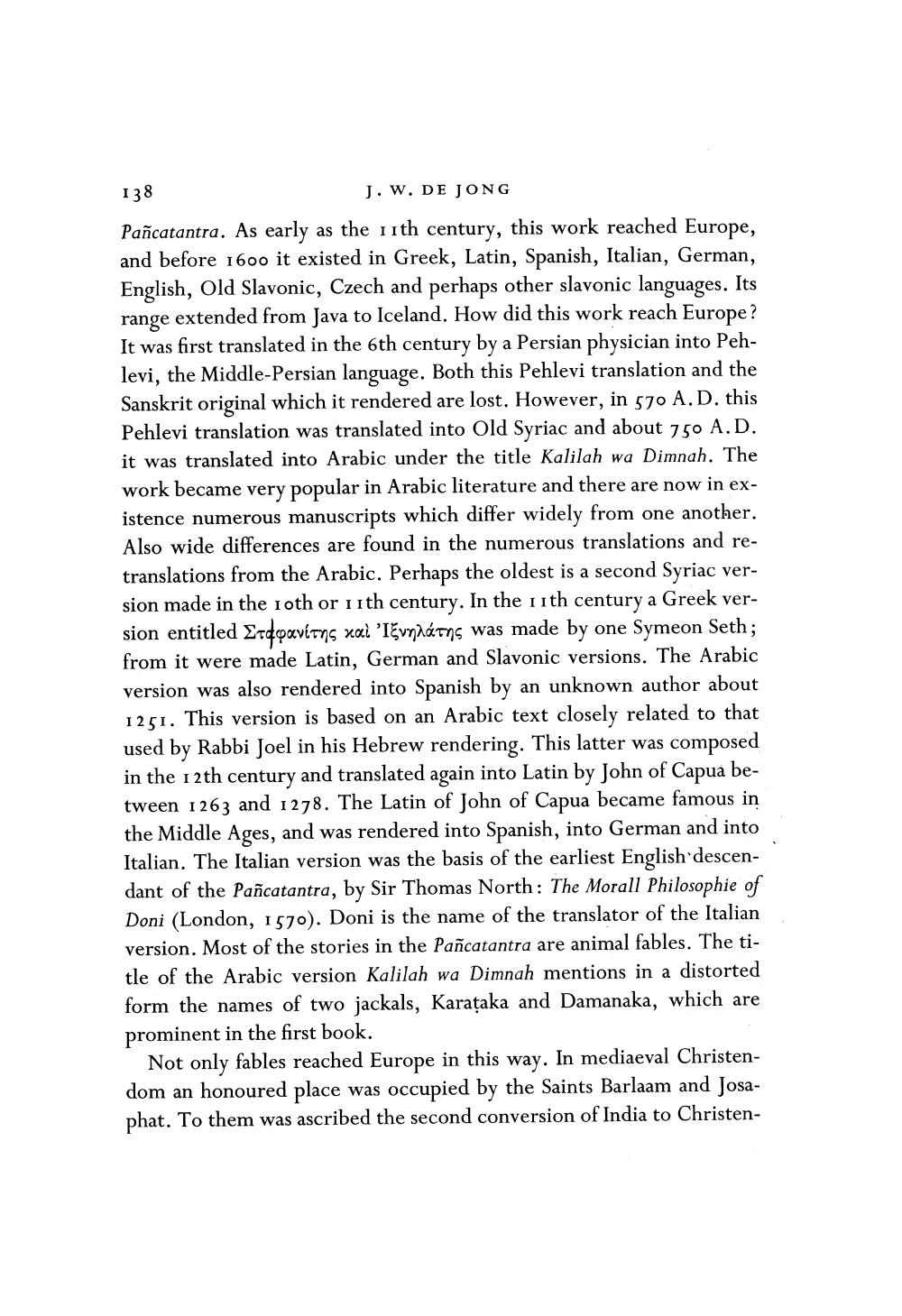________________
138
J. W. DE JONG Pañcatantra. As early as the 17th century, this work reached Europe, and before 1600 it existed in Greek, Latin, Spanish, Italian, German, English, Old Slavonic, Czech and perhaps other slavonic languages. Its range extended from Java to Iceland. How did this work reach Europe? It was first translated in the 6th century by a Persian physician into Pehlevi, the Middle-Persian language. Both this Pehlevi translation and the Sanskrit original which it rendered are lost. However, in 570 A.D. this Pehlevi translation was translated into Old Syriac and about 750 A.D. it was translated into Arabic under the title Kalilah wa Dimnah. The work became very popular in Arabic literature and there are now in existence numerous manuscripts which differ widely from one another. Also wide differences are found in the numerous translations and retranslations from the Arabic. Perhaps the oldest is a second Syriac version made in the 10th or 11th century. In the nth century a Greek version entitled Στεφανίτης και Ιξνηλάτης was made by one Symeon Seth; from it were made Latin, German and Slavonic versions. The Arabic version was also rendered into Spanish by an unknown author about 1251. This version is based on an Arabic text closely related to that used by Rabbi Joel in his Hebrew rendering. This latter was composed in the 12th century and translated again into Latin by John of Capua between 1263 and 1278. The Latin of John of Capua became famous in the Middle Ages, and was rendered into Spanish, into German and into Italian. The Italian version was the basis of the earliest English descendant of the Pañcatantra, by Sir Thomas North: The Morall Philosophie of Doni (London, 1570). Doni is the name of the translator of the Italian version. Most of the stories in the Pañcatantra are animal fables. The title of the Arabic version Kalilah wa Dimnah mentions in a distorted form the names of two jackals, Karataka and Damanaka, which are prominent in the first book.
Not only fables reached Europe in this way. In mediaeval Christendom an honoured place was occupied by the Saints Barlaam and Josaphat. To them was ascribed the second conversion of India to Christen




